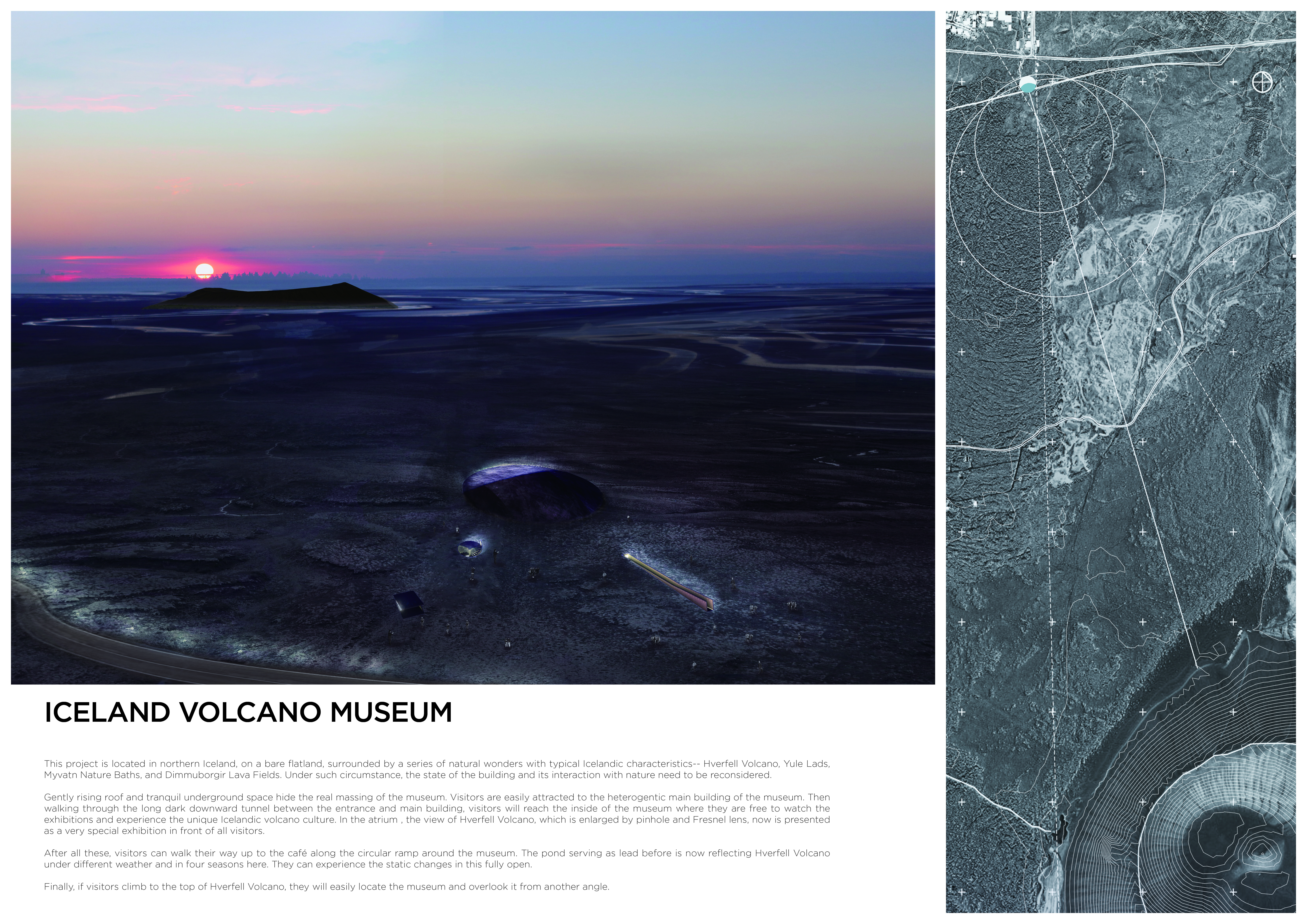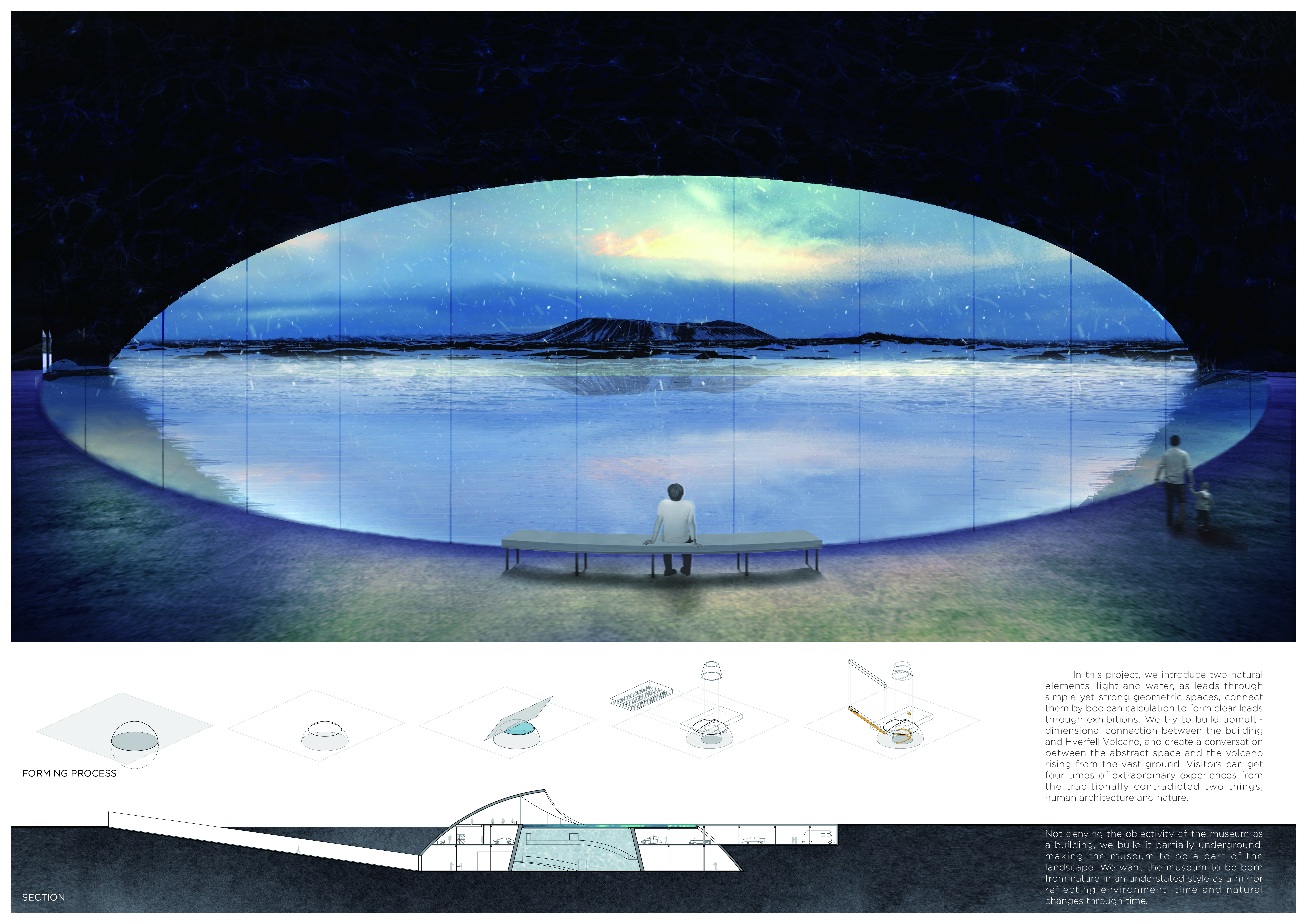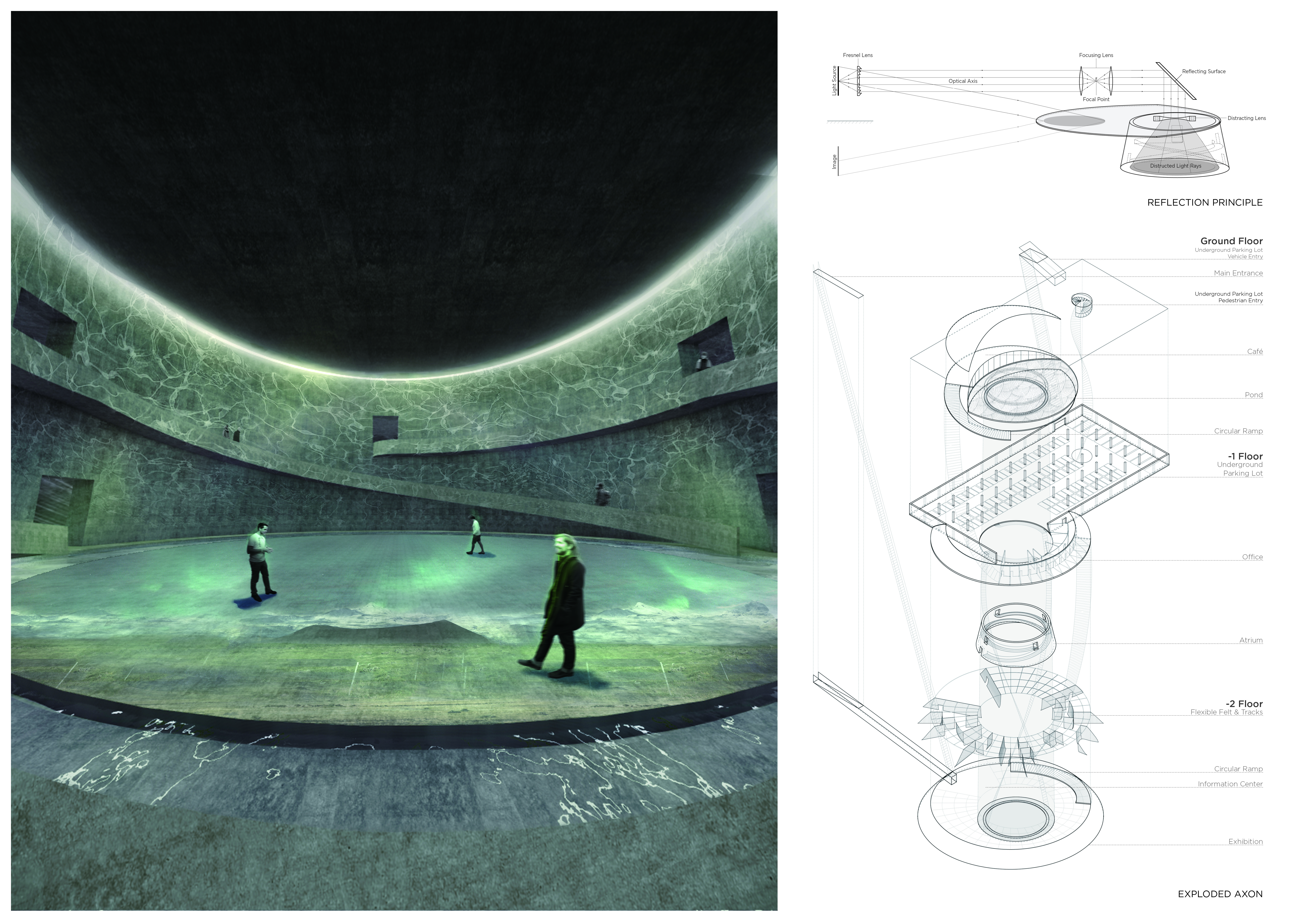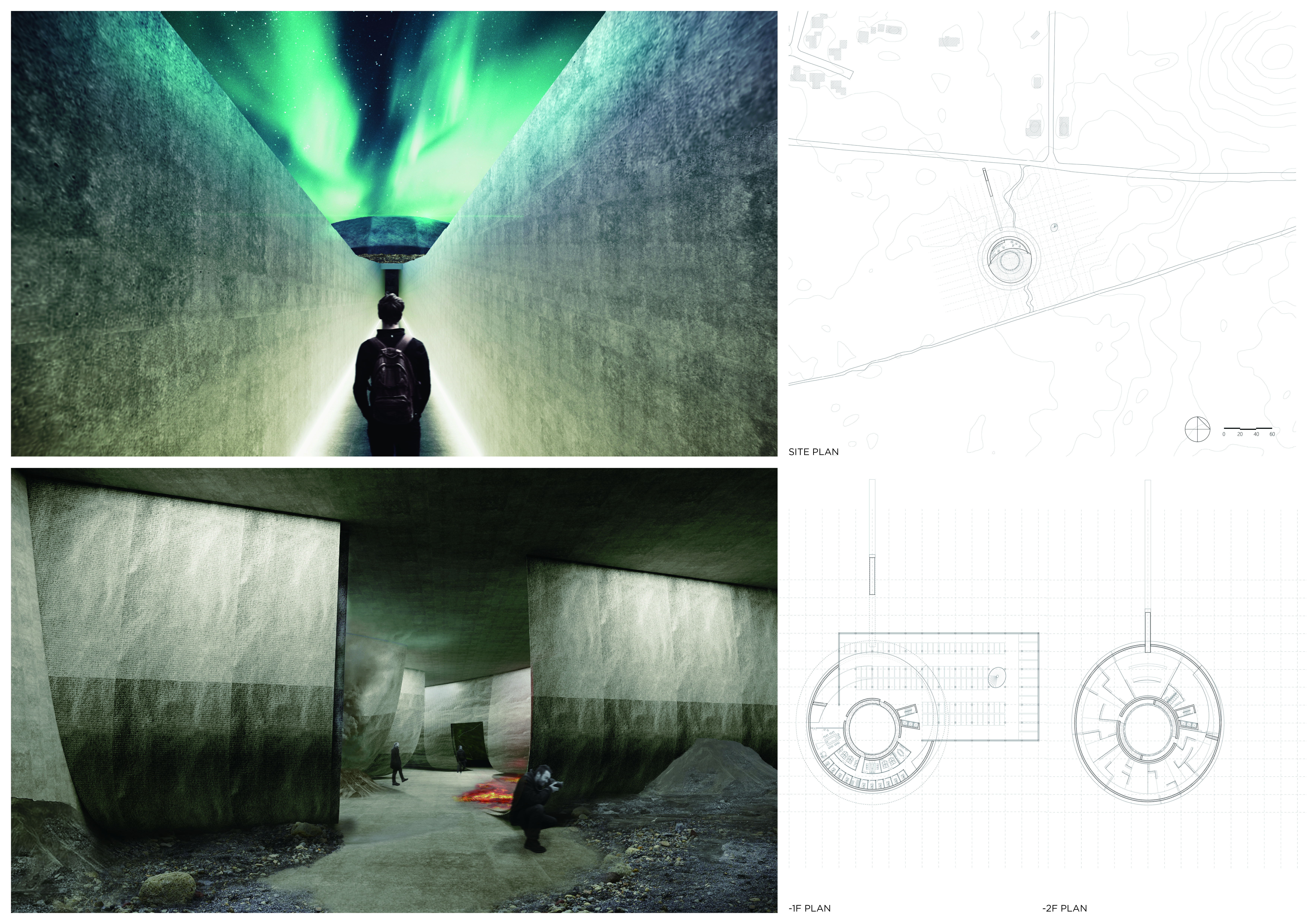5 key facts about this project
The design integrates the museum with its surrounding environment, utilizing forms that reflect the local topography and geology. By adopting a partially underground layout, the structure minimizes disruption to the landscape while enhancing the visitor experience. The main building features a large window that frames Hverfell Volcano, allowing natural light to illuminate the interior and connecting occupants visually to the striking exterior environment. The use of natural materials, such as stone and concrete, complements the museum’s thematic focus on geological phenomena.
Unique Design Approaches
The design of the Iceland Volcano Museum showcases several innovative approaches that differentiate it from similar architectural projects. The concept of creating a journey rather than a straightforward exhibition space is a significant aspect, where pathways and circulation are carefully planned to guide visitors through various experiences. Dimly lit corridors lead to spaces that gradually reveal views of the landscape, contrasting with dramatic lighting effects in exhibit areas. This variation encourages visitors to engage with both the exhibits and their surroundings meaningfully.
Additionally, the project incorporates interactive displays that highlight Icelandic volcanic culture, using technology to create dynamic learning experiences. Features such as a pinhole and Fresnel lens installation allow natural light to interact with exhibit spaces, creating a living connection to the changing weather and light patterns outside. By integrating these elements, the project fosters a deeper understanding of the ecological and cultural significance of Iceland's volcanic landscape.
Visitor Engagement and Education
The museum is designed to support diverse educational initiatives, offering programmatic spaces for workshops, lectures, and community events. Areas are equipped to accommodate interactive installations that respond to visitor participation, enhancing the educational impact. The careful arrangement of exhibition spaces facilitates a logical flow of information, allowing visitors to absorb the scientific and cultural narratives presented.
The architectural design enhances this learning objective through strategically placed viewing points and reflective surfaces that encourage contemplation. By emphasizing a connection to the landscape, the museum underscores the importance of understanding and preserving Iceland's unique natural heritage.
For detailed insights into the architectural plans, sections, and design ideas of the Iceland Volcano Museum, we encourage you to explore the project presentation further. This exploration will provide a comprehensive view of its architectural strategies and educational aspirations.


























